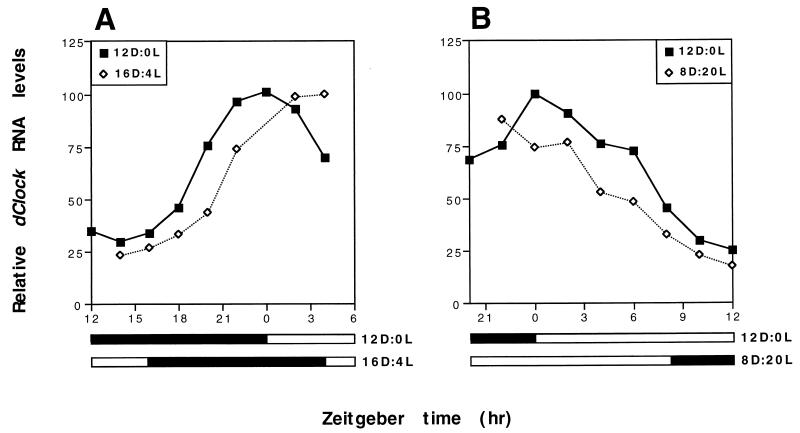FIG. 4.
dClock RNA levels in flies exposed to shifts in the timing of a 12-h LD cycle. Four groups of wild-type D. melanogaster were entrained by a standard 12-h LD cycle for 3 days. Subsequently, two groups of flies were transferred from the original 12-h LD condition and treated with either a backward (A) or forward (B) shift of 4 h in the timing of the 12-h LD cycle; a group of flies maintained in standard 12-h LD conditions served as the control for each group of flies that was exposed to a 12-h LD shift (see Materials and Methods). (A) The 4-h backward shift was initiated by extending the light period for four extra hours (between ZT12 and ZT16) and beginning the dark period at ZT16 (16D:4L) relative to the original 12-h LD cycle (12D:0L). (B) The 4-h forward shift was initiated by beginning the light period 4 h earlier at ZT20 (8D:20L) relative to the original 12-h LD cycle (12D:0L). Peak levels of dClock mRNA under standard 12-h LD conditions were set to 100. Levels of dClock transcripts were determined by RNase protection assays. Relative RNA levels refers to ratios of dClock to RP49 RNA. Closed bar, darkness; open bar, light. The experiment was done twice with similar results, and one example is shown.

